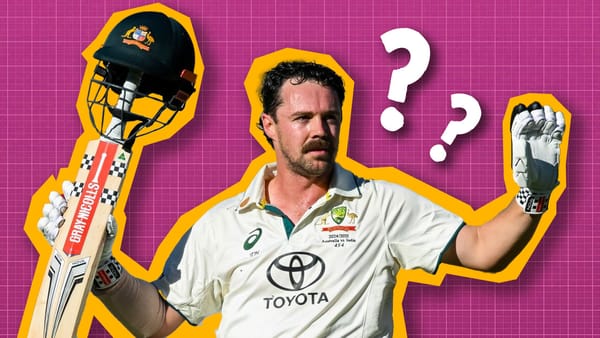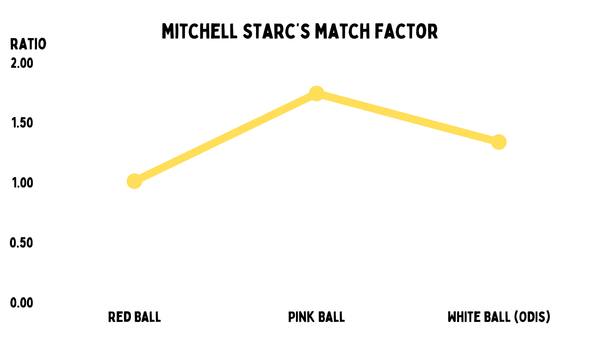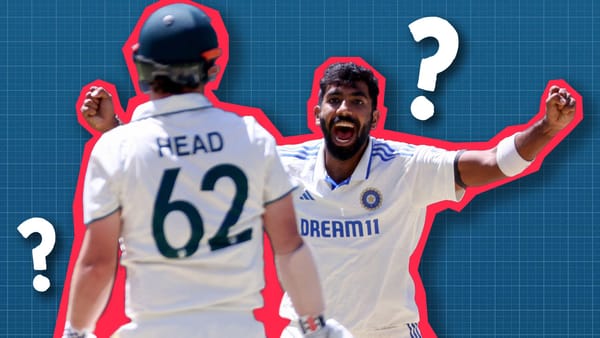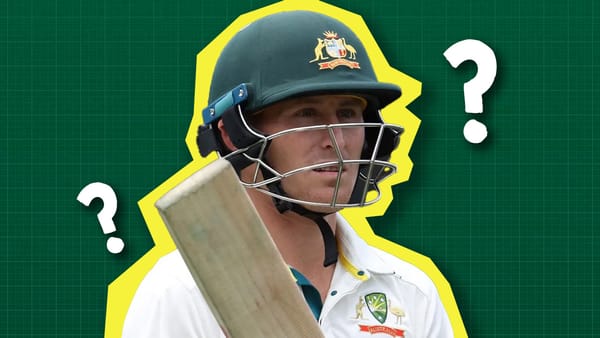Who is the greatest number five of all time in Test cricket?
Unlike the debate over the greatest batter of all time, there’s no clear answer to who the best number five is.
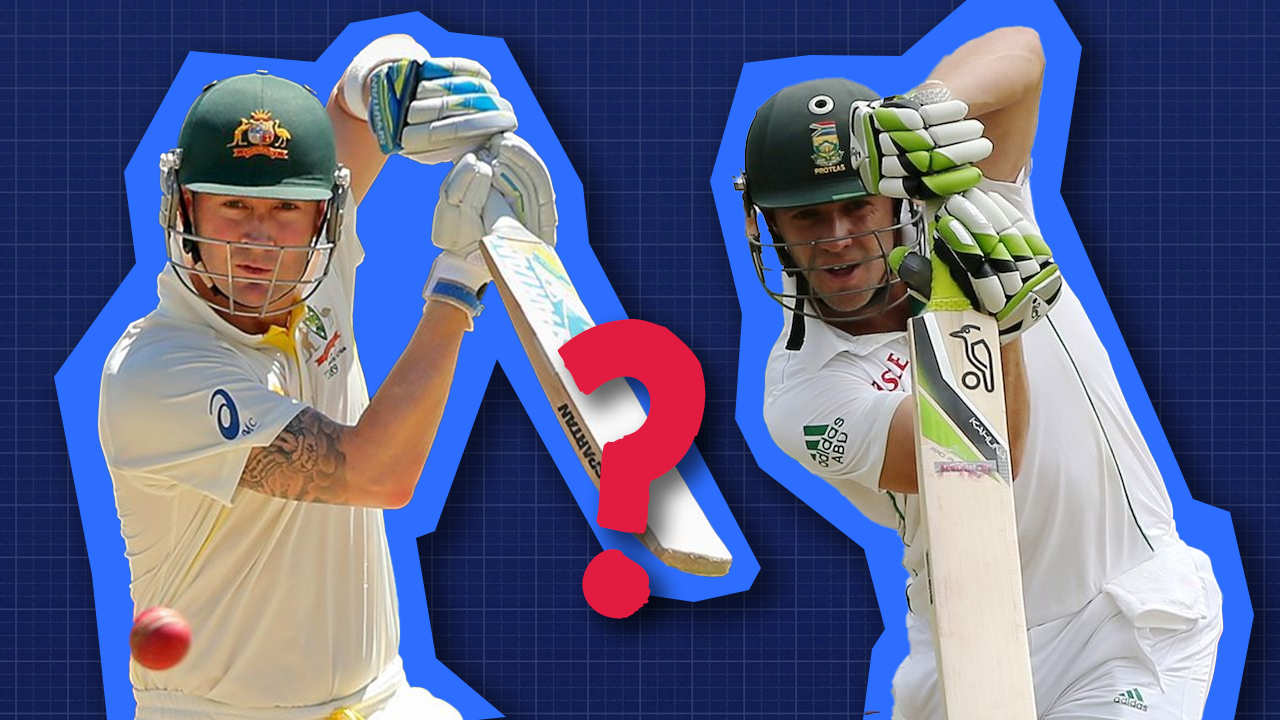
Tip Foster captained England's football team in 1902. But that wasn’t enough, so he also led England in cricket. Even in an era where people played multiple sports, that is quite incredible.
When he made his Test debut against Australia in December 1903, he was at the crease with the score at 73/3. Essentially, the game could have gone either way. He made 287 runs. It was the world record for the highest individual score in Test cricket till April 1930.
It is still the highest score by someone on debut, and was also the biggest score for someone batting at number five, until Don Bradman made 304 against England in July 1934. Last month, Harry Brook became the fifth player to score a triple century while batting at five.
Unlike the debate over the greatest batter of all time, there’s no clear answer to who the best number five is. Is it Shivnarine Chanderpaul with his unconventional batting stance? The gritty Steve Waugh? Andy Flower, who pretty much carried a whole team on his back? Or AB de Villiers, the man who could play every shot in the book—and a few that weren’t?
And it gets trickier when you look at batters and their positions, because they don’t always stay in the same spot. Plus, great batters usually come in higher than five. So we’ve decided to only look at what players did batting at number five, the last truly specialist batting position in a line-up.
No one in the history of Test cricket has spent a higher percentage of their career glued to the number five position than Misbah-ul-Haq. There was no point even calling him before three wickets had fallen, he wasn’t answering. Ajinkya Rahane and Andy Flower also spent an overwhelming chunk of their time batting there, like they had an invisible barrier keeping them from moving up or down the order. Travis Head and Thilan Samaraweera also batted here for over 70% of their innings in Tests.

But look closer, and something jumps out. This list is stacked with modern batters. It’s not that players in the old days found it tough to bat at number five; they just didn’t stay there. Batting orders were more fluid; for instance, England’s line-ups in the 1950s and 1960s were often random. Throw in wet wickets, and you suddenly have players moving everywhere. Since those days, we have been held to ransom by the tyranny of the batting order. Players telling everyone that they are their batting number, like they are discussing their gender or ethnicity.
In the old days, number five was more of a temporary position on purpose. Your top-order players often went there as they were ageing out. A younger player would start there to get used to Test cricket. More recently, it’s almost become a specialist position. If you’re thinking about the limited-overs game and picturing number five as a swashbuckling, six-hitter, that is not the case in Tests. Most batters who have thrived at number five weren’t exactly racing to 50 off 30 balls. They were more likely to grind it out, work their way into an innings, and just try to outlast the opposition. The number five role is usually for the third, fourth or fifth-best batter in the team—usually players who struggle more against the newer ball, or aren’t as consistent up the order.
Chanderpaul and Steve Waugh lead the run-scoring charts, and not far behind them is Michael Clarke. Those are the three batters with over 5000 runs in this position. Among the active players, Ajinkya Rahane (who is not part of the Indian setup currently), Angelo Mathews, Mushfiqur Rahim, Travis Head, Henry Nicholls (last played a Test in December 2023) and Joe Root have scored 2000 or more runs.

Root has the highest average of all number five batters with at least 2000 runs. But he isn’t really a number five, he just spent time there waiting to take over the number four spot after Ian Bell. But Clarke, Chanderpaul and Waugh maintain that record over a much larger sample size. AB de Villiers is a few runs short of 4000, but the South African great batted there more frequently than at any other position in his career. He had a spectacular average north of 60. In total, 13 batters have scored more than 2000 runs at over 50 runs per dismissal, with a couple of others just missing out.
How do the number five batters on this list fare compared to the other top six batters in the matches they played? Root averages a staggering 91% more than the rest, but we know that’s over a relatively small sample size. De Villiers also has an outstanding match factor of 1.7. Flower, Clarke, Graham Thorpe, Chanderpaul and Waugh all average 1.5 times or more relative to the other top-order batters in their matches.

Thorpe, who passed away recently, got a lot of love for his batting at his time. Most of the players around him on this list are greats for their nation or all-timers. He is not one of them, and a lot of that has to do with his career average being under 45. But England played on many tricky surfaces, and he was certainly a fantastic player at five without much support.
But one place he did struggle while batting at five was in the first innings of Tests. As the match progressed, he got a lot better—averaging 66, 87 and 48. In contrast, Nicholls is nearly identical in all four innings. We had to double check the data after noticing this. No one else on this list comes close to this pattern.

Allan Border averaged 84 in the first innings, which is the second-best of all batters on this list. In the following three innings, he averages 41, 42, 39, which is a consistently decent record. Unlike him, Clive Lloyd—another famous Test captain—struggles in the first, and is great in the next three.

Waugh and Chanderpaul are the people we have seen do the number five position the most. They’re great in the first two innings, and then their averages fall. But Chanderpaul’s average is similar in innings three and four, while Waugh’s dip is a lot more stark—his mark is about 35 in the third and under 30 in the last innings of the match. Angelo Mathews is the opposite—averaging 33 and 40 in the first two innings, and that goes up to 56 and 45 when he bats for the second time in the game.

Although both of them are from the same continent, are wicketkeepers (though AB de Villiers kept in only 24 out of 114 Tests) and have been associated with RCB in some form, there aren’t too many similarities between AB de Villiers and Andy Flower. The Zimbabwean great stopped bowlers from taking any wickets from one end, as he faced over 114 balls per dismissal across all batting positions. When AB de Villiers batted, he stopped the ball mid-flight to make a decision on his next boundary. But they follow the same trajectory here—the only difference being that De Villiers' average was consistently better across all innings. They start off well, have a slight dip in the second innings, are incredibly good in the third, and decline in the final innings.

We don’t have all of Viv Richards' ball-by-ball data, but it is enough to know that he was quick. His strike rate, even 32 years after his retirement, is still the highest on this chart, even though 34 of his 63 innings at number five came after he turned 35. (Please don’t use the phrase Vivball.) But Head isn’t too far off, which shouldn’t be a big surprise if you’ve followed his Test career since the 2021 Ashes.

On the opposite end is Colin Cowdrey, who’s in his own tier—striking at less than 40. It’s not very often you see batters scoring slower than Chanderpaul and Flower. De Villiers and Clarke have high averages at a scoring rate which is quicker than most other batters on this chart. Zaheer Abbas’ strike rate was just below 60, while Root and Lloyd score quicker than that.
It is interesting that number five doesn’t produce as many outliers in terms of batting speed. Maybe because at three wickets down, the game is often already in a zone, and batters are reacting to it. But at number six and seven, you get players with dual skills who score quicker, and perhaps some defensive all-rounders and keepers. But at five, it seems like Colin Cowdrey, Viv Richards and Travis Head are the only major outliers.
On this graph, UAE is considered as home for the Pakistan batters and away for everyone else. Seven batters on this chart average over 50 both home and away—De Villiers, Root, Inzamam, Flower, Thorpe, Chanderpaul and Waugh. But there are definitely a few outliers here, especially Australian batters.

Border averaged 45 at home, and 63 on the road. That is amazing for any batter, but particularly Australian players, who usually have higher averages at home. For example, Clarke averaged 85 on home soil and 45 when touring. But that trend holds up even more for Doug Walters and Head. You also see this pattern with Pakistani batters—Zaheer Abbas averaged 77 at home but only in the low 30s away.
When a batter goes out to bat means a lot. Take two players here, Andy Flower and Inzamam-ul-Haq. When Flower came in with three wickets down, Zimbabwe barely had 60 runs on the board; Inzamam-ul-Haq was double that. I know which job I would prefer.

From the data we have on Flower’s overall career (in all batting positions), his median entry point was 25.3 overs—implying that the top-order batters in his team batted slowly, but also did not make a lot of runs. This means that, at the very least, he wasn’t facing the new ball too often. Mushfiqur, Root and Chandimal batted when the team’s runs were less than 80, which probably made it tougher for Root, as the ball still moves in England at that point.
Waugh and Clarke’s median entry point is about the same, while Chanderpaul’s is in the high-80s. The scoreboard read just above 100 at three wickets down when De Villiers batted at number five.
It is much easier to be a number five with a strong top order. Players like David Gower, Nathan Astle and Carl Hooper had their aggressive, aesthetically pleasing wings clipped by constantly having to come in way too early.
On the other hand, batters like Azharuddin, Border, Waugh, Clarke, Ganguly and Laxman—who were part of great batting line-ups—all came to bat with a good platform. Even Thorpe’s record is noteworthy here. It shows that while his team didn’t score many runs, players like Atherton and Hussain gave him a chance to come in with the ball a little older.

When looking at what happens after a collapse at the top, Clarke stands tall. But that is not his reputation as a player. That is because before 2012, he would have been near Head and Gower on this chart.

At that point, he was fine in those situations, even if he did not get that much credit. This was because everyone else around him was so good. But after the start of 2012, he learnt how to be the player he should have been for a long period.

He enters the wicket at 37/3 and makes 329 not out, 40/3 and scores 259, and 55/3 to make 230. These are the best examples of why it is great to bat at number five—especially in Australia. The new ball is tough. You come in at the end of that and get set, then the pitch flattens out. Of course, you still have to be good enough to make that work. For a few years, Clarke was outstanding at this. He made another double century coming in at three down for around 80. The three standout innings here were at home.

Clarke stands out among the rest. But Flower and Waugh are also very impressive, though the latter played in a stronger batting line-up. And Chanderpaul, like Flower, often did this without much support. De Villiers, Thorpe, and Hooper are the other three batters with over 1000 runs at an average of over 50. Chanderpaul played 43 innings, so he faced this scenario more often than the others, and averaged 37.

Great batters are remembered for their runs against high-quality bowling. Waugh stands out with about 800 runs more than the next best, with much of his finest work coming against a world-class West Indies attack. Chanderpaul has the second-most runs and third-best match factor. Flower is an outlier on match factor and is one of the top run-scorers against these line-ups. But remember, he was so much better than the batters in his side, who would struggle against great attacks. Walters, Clarke and Thorpe scored heavily and maintained impressive match factors against the best bowlers.

This metric judges batters on how they perform in wins and losses, and excludes drawn matches. De Villiers has a strikingly high match factor value in these games. But Waugh averages 75% more than the top six batters in his games, while being the highest run-scorer on this chart. It makes sense, as Australia didn’t play in as many draws compared to other sides. As usual, Clarke, Chanderpaul, Thorpe and Flower all have elite numbers. The latter three all did it in a lot of losses. Chanderpaul and Flower have two of the best averages ever in lost Tests.

Paul Collingwood averaged six percent less than the other top-order batters in wins and losses, while Sourav Ganguly had a match factor of 0.83. But VVS Laxman's case is the most intriguing. When he made 59 and 281 in Kolkata in 2001, he was batting at number six and then promoted to three. He did not bat at five in that match in both innings. This shows how hard it is to work out the true worth of a player when you only look at their batting position.
Earlier in the piece, we talked about how we did not usually see dashers at this position in the history of the game. But that seems to be changing now. In the current game, there are quite a few attacking number fives like Rishabh Pant, Harry Brook and Travis Head. In the future, will teams field quick-scoring number fives as a tactical choice, or will it just be the game's natural progression? It feels like a movement though. Teams now look at number three as a third opener, number four your best batter, and then number five as the player who can do the most damage.

So where do we end up on who is the greatest in this position? It is tough to evaluate, because if you are a great number five, why are you not coming in earlier? You also have players like Viv Richards and Inzamam-ul-Haq, who moved there towards the end of their careers. Allan Border batted 70 times at five and 124 times in the top four. They all had great records at five, but none identify as that number.
Then you have the Chanderpaul and Waugh conundrum. Both are great number fives precisely because they refused to play higher up the order—even when needed. So their records look incredible, but their teams might have been in better positions in the match had they taken up the harder batting spots. It might have taken a couple of runs off their overall averages, and allowed for younger or older players to bat in the easier number five position.
What of De Villiers and Flower, two players who kept and were therefore placed slightly lower down the order than their talent demanded? Flower basically played as an opener but from the number five position, a middle-order version of what BJ Watling did for the great New Zealand team of the modern era. But in De Villiers’ case, it is hard to see how he could have ever been promoted when you have two all-time greats batting at three and four. So, is he a great number five just because jumping Amla and Kallis was not on the cards?
At first, I thought Michael Clarke’s case was similar, being trapped behind Ponting. But Clarke played 62 innings at number four in his career, and averaged 31. At number five, he ended up with the best raw numbers. Because he made runs, it starts to look like his ideal spot. But in truth, he finally unlocked the batting that was always within him, and he just happened to be at number five during that period. His best work at number five were those four epic innings at home.
None of this looks at someone like Clive Lloyd, who was the perfect number five, but because of their order, his age, and other factors, he moved around quite a lot. So you have someone that should be on any shortlist for the greatest number fives left off it. Graham Thorpe is in the conversation because when he batted at five, he did his best work, and Lloyd did not.

You aren’t really choosing the best batter at number five, because they would more often than not bat higher. So you are almost picking the most prototypical number five. And that depends on how you look at it. Michael Clarke’s epic run might be your jam. Shiv and Waugh are the most classical modern examples. But AB de Villiers is maybe the most entertaining.
How do you really make a decision to pick the best number five, knowing it’s the least important specialist position? The player who comes in with a huge platform, or to rebuild one on their own. I think in terms of batting, number five is the ultimate vibes pick. For that alone, I would go for AB de Villiers. Because when you are three wickets down early, what I really want is someone who can stop any bowler. When the runs are flowing, he can just go out there and have fun with it.
I am not an expert in Tip Foster, but based on this hat, I think he would have wanted it that way.


